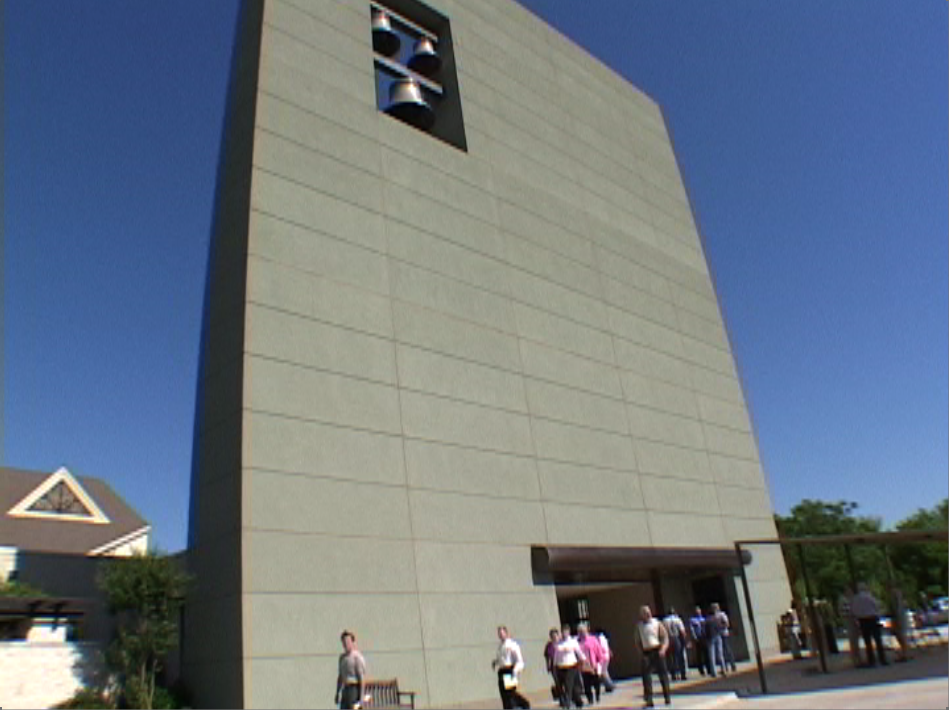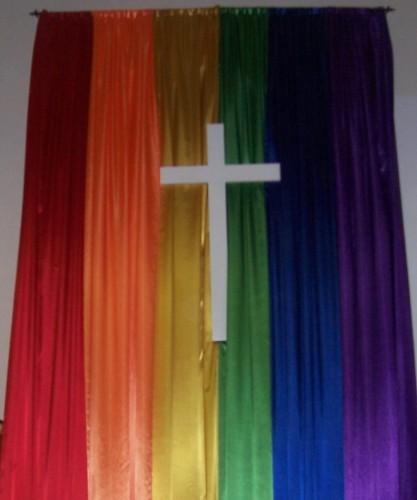Chip off the old mainline?
 Long ago, when I was the religion-beat reporter and columnist for the Rocky Mountain News (please pause for a moment of silence), I thought that one of the most interesting stories in town was the growth of the local congregation of the Metropolitan Community Church. This was the 1980s and AIDS was a topic that dominated the news and bled over into all kinds of different subjects, including -- obviously -- religion. Denver was a liberal mainline Protestant town in those days, yet the Colorado Front Range was also evolving into a major center for Evangelicals.
Long ago, when I was the religion-beat reporter and columnist for the Rocky Mountain News (please pause for a moment of silence), I thought that one of the most interesting stories in town was the growth of the local congregation of the Metropolitan Community Church. This was the 1980s and AIDS was a topic that dominated the news and bled over into all kinds of different subjects, including -- obviously -- religion. Denver was a liberal mainline Protestant town in those days, yet the Colorado Front Range was also evolving into a major center for Evangelicals.
On one level, it would have been easy to paint the MCC flock near downtown as the gay church, period, the church that was at the center of many questions linked to ministries to people with AIDS. But it was clear to me that this congregation was more than that.
First and foremost, it was interesting as a church in and of itself. The clergy I knew there were candid enough to talk to me about many of the theological questions linked to their jobs and it was clear that gays and lesbians in their flocks had radically different views on, for example, what words such as "faithful" and "monogamous" meant. The congregation also included many people who were quite evangelical in their approaches to most basic theological issues, while the pews also contained many women and men from liberal church backgrounds.
To get a sense of that mix, you might want to glance at the following from the online biography of the Rev. Troy Perry, the founder of the MCC. You can also click here for some additional MCC denominational history.
Perry began his vocation in Florida at the age of 13 and was licensed as a Baptist minister at 15. During this period, he became aware of his sexual orientation and felt -- as many gays did in rural America -- that he must certainly be the only one in the world who felt that way. In 1959 he married his pastor's daughter, and a year later he, his wife and newborn son moved to Illinois where Rev. Perry planned to attend Midwest Bible College. While studying at Midwest, Rev. Perry worked for a plastics company that transferred him to Southern California to open a new plant. Rev. Perry, with his wife and two sons, made the move in 1962.
Once in California Rev. Perry was assigned to pastor the Church of God of Prophecy in Santa Ana. It was there that Rev. Perry experienced an "uneasy" coming out and came to terms with his gayness.
See what I mean? Suffice it to say that Perry was not alone, in terms of his Pentecostal and Baptist roots.
Now, this brings me to a story that ran the other day in the Dallas Morning News, which still covers religion events and trends from time to time. The headline was very, very basic: "Dallas' Cathedral of Hope, world's largest predominantly gay church, celebrates 40 years."
Sadly, the story is very, very basic as well. This is especially important because the Cathedral of Hope is, as you would expect, a rather important and symbolic flock. In part, this is because Dallas is a rather important and symbolic American city, when it comes to American Protestantism. Ask the folks at Christianity Today about that.
The roots of this congregation date back to 1968 and, since then a number of important gay voices have been linked to its work and pulpit ministry, including the Rev. Michael Piazza and the Rev. Mel White.
 To cut to the chase, the church has evolved quite a bit and there is a hint of this in the story.
To cut to the chase, the church has evolved quite a bit and there is a hint of this in the story.
A big, unabashedly gay church in a Bible Belt city may have struck many as surprising, and it certainly drew media attention. But others say it's no wonder that Cathedral of Hope flourished where it did.
"In some ways, Dallas is the perfect place," said Bernard Schlager, executive director of the Pacific School of Religion's Center for Lesbian and Gay Studies in Religion and Ministry, in Berkeley, Calif. "It's a churchgoing culture, and Dallas is known for having an open and vibrant gay life."
Through the '90s, Cathedral of Hope would grow to more than 3,000 members, and by mid-decade had commissioned renowned architect Philip Johnson to design an entire church campus. But finding money to realize Johnson's vision has proved a challenge -- some say an albatross. The church has never come close to funding the centerpiece sanctuary. By 2003, critics within the church raised questions about Piazza's financial management, prompting an investigation by the Metropolitan Community Churches. A nasty fight ensued, with Piazza resigning his Metropolitan Community Church credentials, and the church voting to leave the predominantly gay denomination. ...
Soon members voted to join the United Church of Christ, a mainline Protestant denomination that welcomes gay people, including as clergy.
In other words, this church started off as a gay-friendly church in church-happy, largely evangelical region, yet in a city that also had a major liberal mainline Protestant community. My assumption is that the early congregation was even more theologically diverse -- other than in its essential affirmation of same-sex relationships -- than the church I covered in Denver. At that point in time, the MCC was a pretty complex crowd. Today? I cannot say.
But the Cathedral of Hope has now tied the knot with one of the most doctrinally liberal bodies -- arguably the most liberal -- in Christianity in North America. This is President Barack Obama's church, the denomination that began openly ordaining gays and lesbians in 1980. There is no clearly theistic church to the left of the UCC.
So, what do the people at the Cathedral of Hope belief and preach today in terms of basic faith issues? How has the church changed? It seems to me that the News has fallen for a very old trap and has painted this important congregation as the gay church, period. That is way too simplistic.
Photo: The Cathedral of Hope in Dallas.